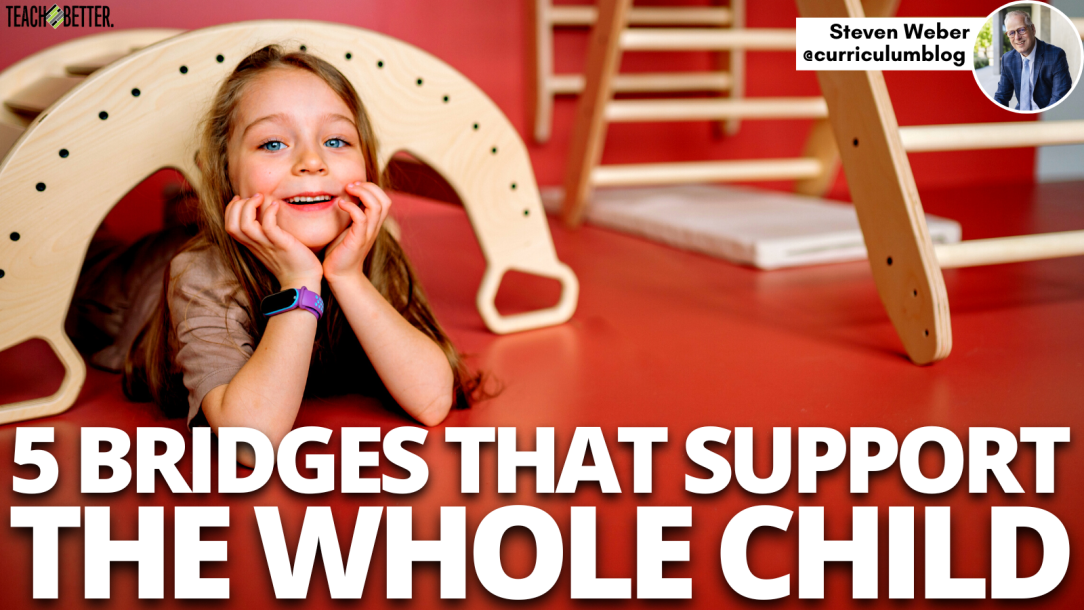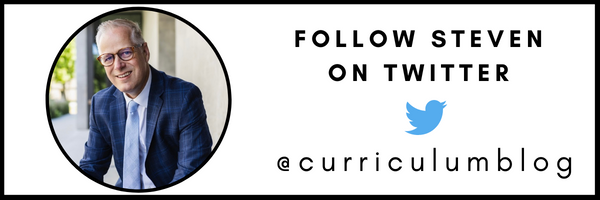TL;DR:
- Education is about building bridges, with teachers as bridge builders guiding students through their K-12 journey.
- Bridges need to be built between misunderstanding and understanding, dependence and self-regulation, learning for grades and lifelong learning, illiteracy and civic literacy, and one right answer to adaptability.
- A whole child education includes academic skills and additional aspects that prepare students for the challenges of life, and educators need to ensure vertical alignment and identify areas where bridges have collapsed and need rebuilding.
Bridging the Gap to Support the Whole Child
“Education is all a matter of building bridges.” – Ralph Ellison
Teachers are bridge builders. They help students reach the other side. Imagine the longest bridge you have crossed while driving. This is what a student’s K-12 journey feels like. The goal of education should be to encourage and equip students as they successfully cross each bridge. “No longer an endpoint in the public education system, the American high school is now being asked to prepare all its students for the post-secondary schooling and training required for full economic and social participation in U.S. society” (Balfanz, 2009, p. 18).
Bridging the Gap Between Misunderstanding and Understanding
“Learning is important because no one is born with the ability to function competently as an adult in society” (Bransford, Brown, & Cocking, 2000). Students enter each grade level with different understandings and readiness levels. Misunderstandings can be caused by prior experiences, untaught skills from the previous year, or the inability to transfer skills into a new situation.
If students can learn to apply their prior knowledge, problem-solve, and adapt then they will be better equipped for life. Click To TweetIf the goal of school is to prepare each learner to function as an adult, foundational skills and enduring understandings must be prioritized. Before educators can build a bridge, students need a strong foundation. Teachers must identify the understandings that students need, while navigating misunderstanding, providing students with feedback and new opportunities to develop key skills. “Evidence of misunderstanding is incredibly valuable to teachers, not a mere mistake to be corrected. It signifies an attempted and plausible but unsuccessful transfer (Wiggins & McTighe, 2005, p. 51).
Bridging the Gap Between Dependability and Self-Regulation
“When I was a child, I spoke as a child, I understood as a child, I thought as a child; but when I became a man, I put away childish things” (Holy Bible, I Corinthians 13:11). If you have raised a child, you may have been tempted to do things for them (i.e., make the bed, laundry, cook meals, and keep them safe). At some point, a child becomes a pre-teen and eventually graduates from high school. Parents don’t want their children to remain dependent, even if it can be hard to let go at times.
“Self-regulation is the process of continuously monitoring progress toward a goal, checking outcomes, and redirecting unsuccessful efforts” (Berk, 2003). These skills have been referred to as ‘employability skills.’ Assignments, projects, and assessments must allow students to practice self-regulation. Teaching and learning involve goal setting, scaffolding, support, feedback, and metacognition. When students learn how to self-regulate, they will be equipped to navigate life’s challenges.
Bridging the Gap Between Learning For a Grade and Lifelong Learning
Building a bridge to lifelong learning is at the core of our work. At the end of the school year, several schools have a student assembly to recognize students who made the A/B Honor Roll. Don’t get me wrong. I support student celebrations and student assemblies. My question for educators is: Have we focused on lifelong learning or coverage? Some students can earn an A or B by showing up for class each day. A student’s performance, graduation project, speech, or art show may be a better indicator of one year’s worth of growth.
In today’s era of high-stakes testing and accountability, teachers feel pressure to ‘cover’ material, rather than teach for understanding. Covering material may indicate that a teacher has taught content or checked off each state standard, but it does not mean that student understanding took place. When teachers and administrators make student understanding the goal, then the emphasis will be on lifelong learning.
Bridging the Gap Between Illiteracy and Civic Literacy
In order for students to contribute and participate in a democratic society, they must have a basic understanding of rights, responsibilities, and how a government operates. Sadly, many U.S. school districts have participated in curricular reductionism which emphasizes reading and mathematics in grades K-6. Social Studies may not be taught until high school. Students may learn about Martin Luther King once a year, sing ‘I’m Just a Bill’ from Schoolhouse Rock during Constitution Week, and tour the State Capitol. These isolated activities do not produce civic literacy.
School districts must determine age-appropriate skills and prepare each learner to be a participant in the community, state, nation, and world. A robust civics education was once a priority in K-12 schools. “Nationally, we are at a crossroads. For our democracy to continue, future generations must know its structures, ideals, history, and ways to engage within their respective communities” (Reidel, 2021). If students cross the bridge at high school graduation and are literate in the traditional 3 Rs (reading, ‘ritin, ‘rithmetic), but ill-prepared to contribute as a citizen, the system has failed students.
Bridging the Gap Between One Right Answer to Adaptability
Playing the game of school may help a student advance to the next class, but parents and teachers are not hoping students will do well enough to simply get promoted. Educators understand that we must work together to equip all students for the game of life. When students enter kindergarten they are full of questions and their eyes light up when they discover new things. At some point in the education system, most students begin chasing the right answer. Students may ask, will we get credit for this? “Adaptability is the ability to learn flexibly and efficiently and to apply that knowledge across situations. It’s not so much a skill as a meta-skill – learning how to learn and being conscious of when to put that learner’s mind into action” (Future Proof: Solving the ‘Adaptability Paradox’ For The Long Term – McKinsey & Company).
If students can learn to apply their prior knowledge, problem-solve, and adapt then they will be better equipped for life. If you have experienced dropping your child off at college or helping them move into an apartment, you may have asked yourself: “Are they ready to live on their own? What skills did I forget to teach my child? Do they know how to budget and save money? Do they know how to change a flat tire? Have they ever bought their own groceries? What did I forget to teach them?” We may not be able to teach students every skill they need in life, but we can prepare them to be adaptable.
[scroll down to keep reading]Five Questions For Bridge Builders
- Are we effectively building the bridges addressed in 5 Bridges That Support the Whole Child?
- In addition to academic skills, what does a whole child education include?
- Do we have vertical alignment (skills to address) in our school/district?
- What is one bridge that has collapsed in our school that we should rebuild?
- Which additional bridges would you add to the five bridges addressed by the author?
“A fundamental part of educating the whole child asks education systems and communities to ensure that each child sees itself as an active maker and shaper of the world they will inherit.” – ASCD Whole Child Network (The Learning Compact Renewed: Whole Child For The Whole World)
References
ASCD Whole Child Network (2007). The learning compact renewed: Whole child for the whole world. ASCD. Retrieved from http://www.ascd.org/ASCD/pdf/Whole%20Child/WCC%20Learning%20Compact.pdf
Balfanz, R. (2009). Putting middle grades students on the graduation path: A policy and practice brief. National Middle School Association. Ohio.
Berk, L.E. (2003). Child development. Boston, MA: Allyn and Bacon.
Bransford, J. D., Brown, A. L., & Cocking, R. R. (2000). How People Learn: Brain, Mind, Experience, and School. Washington DC: National Academy Press.
Brassey, J., De Smet, A., Kothari, A., Lavoie, J., Mugayar-Baldocchi, M., & Zolley, S. (2021). Future proof: Solving the ‘adaptability paradox’ for the long term. McKinsey & Company. Retrieved from https://www.mckinsey.com/capabilities/people-and-organizational-performance/our-insights/future-proof-solving-the-adaptability-paradox-for-the-long-term
Ellison, R. (1963). What these children are like. [Unpublished lecture]. Retrieved from https://teachingamericanhistory.org/document/what-these-children-are-like/
Holy Bible. New King James Version. I Corinthians 13:11.
Reidel, J. (2021). Civics education is essential for creating engaged citizens. I’m hopeful it’s about to make a comeback. Edsurge. Retrieved from https://www.edsurge.com/news/2021-03-31-civics-education-is-essential-for-creating-engaged-citizens-i-m-hopeful-it-s-about-to-make-a-comeback
Wiggins, G. & McTighe, J. (2005). Understanding by design (2nd Ed.), ASCD. Alexandria, VA.
About Steven Weber
Dr. Steven Weber is a curriculum leader. He has served on multiple state and national boards. His areas of research include curriculum design, multiplying leaders, professional learning, and school leadership.




